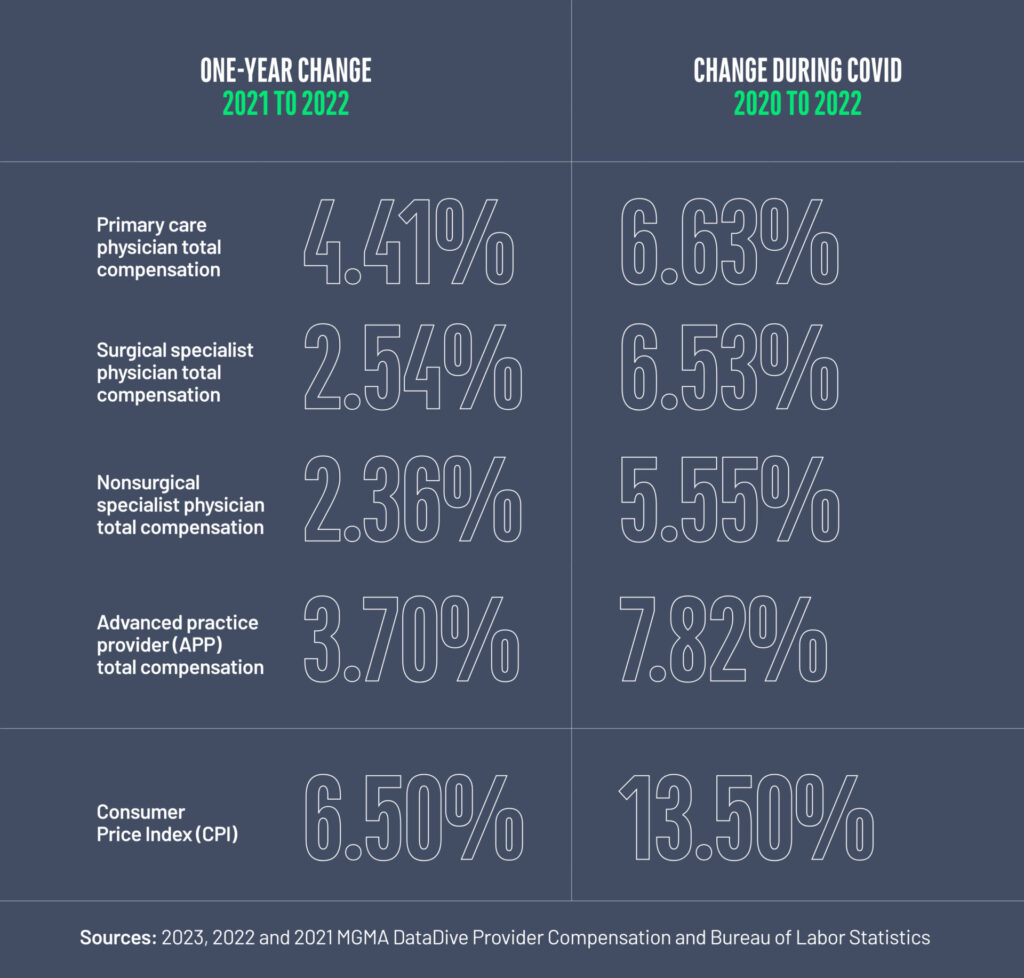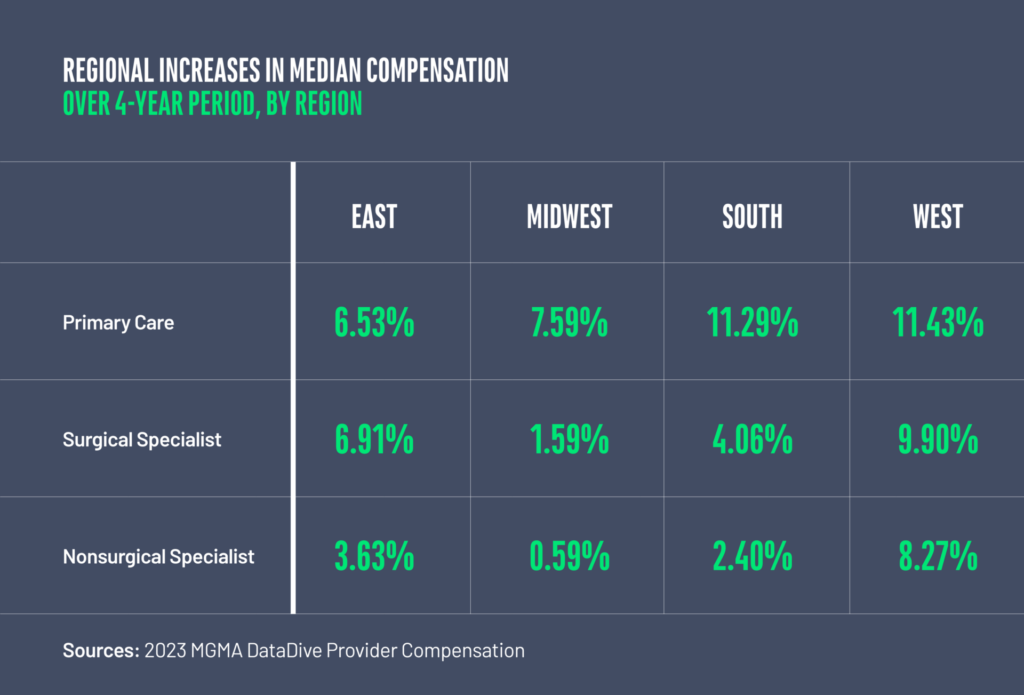Physician compensation increased in 2023––but was it enough to counter inflation? Below, learn more about the top healthcare compensation trends from this year.
- Physician compensation rates increased in 2023 …but not compared to the pace of inflation
MGMA reported that both physicians and advanced practice providers saw increases in compensation in the past year ranging from 2-4%. But those increases in compensation have been largely outstripped by severe inflation.
The Consumer Price Index (CPI) rose 6.5% from December 2021 to December 2022, which is higher than the increase in compensation that most healthcare providers saw last year.

- When it comes to physician compensation, location matters.
As with any other sector, location is one of the biggest determinants in physician compensation. According to MGMA, physicians in the Western United States have experienced larger compensation increases across primary care, surgical, and non-surgical specialties than any other areas in the U.S.
The differences between state to state are even more dramatic. According to MGMA, primary care physicians in Mississippi earn nearly $140,000 more on average than their lowest-earning counterparts in Washington, DC; surgical specialty physicians earn $327,000 more in South Dakota than their lowest earning counterparts in Louisiana, and nonsurgical specialty physicians earned over $400,000 more in Alabama than their lowest earning physician counterparts in Nevada.

- PCPs received a much-needed increase in compensation, but specialists continue to see the biggest gains.
Primary care physicians saw a modest increase in salary this past year, with the growth in median total compensation doubling from 2.1% to 4.4%.
Despite those increases, specialists continue to be the highest-paid specialties. The demand for specialists is not new––plastic surgery, orthopedics, cardiology, urology, and gastroenterology have reliably placed at the top of the physician salary pyramid for the past decade––but this year saw significant growth in several areas.
Oncologists saw the highest increase in compensation at 13%, followed by gastroenterology at 11%, and anesthesiology, radiology, critical care, and urology which all saw a 10% increase in compensation.
The increasing compensation for specialists likely reflects the aging U.S. population’s reliance on specialty care. But even despite the increased demand for these services, these roles aren’t always easy to recruit: many hospitals rely on locum tenens to fill staffing gaps in these specialities.
- Demand for locum tenens continued to grow, and is projected to grow even more in the coming years.
In contrast to many other sectors of the healthcare field, locum tenens has continued to grow––SIA forecasts that locum tenens will grow by 12% in 2023, and that growth will likely continue into 2024.
Some of this growth is related to the increased demand for specialty care––many healthcare facilities who have not been able to recruit full-time specialists rely on locum tenens to care for chronic and complex illnesses that require specialized skills.
Much of that demand is also due to the fact that a substantial percentage of the physician workforce is approaching retirement age.This is leading to more and more healthcare facilities relying on locum tenens to fill the gap left by those physicians (locum tenens is also a way for some of those retirement-age physicians to continue practicing without having to commit to full-time work).
In addition to physicians, advanced practice providers are also expected to remain in high demand, as they help fill the gaps within healthcare facilities, many of whom are moving toward a more collaborative care model.



